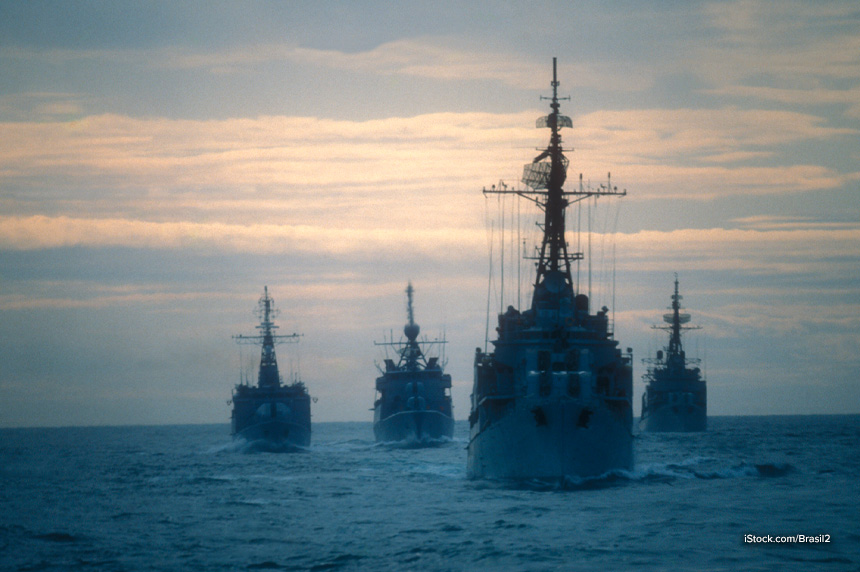Stay up to date with the latest OSINT news around the world.
This week in open-source intelligence (OSINT) news: Two new reports show how propaganda can influence the course of war, OSINT analysts track Russian warships as they head to Cuba and a kamikaze boat strikes its first target in the Red Sea.
This is the OSINT news of the week:
Information laundromat uncovers how propaganda reaches the world
Despite the Russian state media website, RT.com, being effectively blocked in most Western countries’ search results, its content remains widely available across the EU and the U.S. How do they manage to avoid restrictions and continue to disseminate their propaganda across the world? A group of analysts from the Alliance for Securing Democracy (ASD) explain how their organization, in collaboration with the University of Amsterdam, has developed an open-source tool that helps uncover content and metadata similarities between and among websites. The group used the tool, appropriately named The Information Laundromat, to publish a report that highlights the many pathways through which content from RT.com reaches audiences in Europe and the United States.
Among the key findings of the report are the surprising reach of the Russian propaganda machine (their content was found on sites in 40 countries on six continents); the role of social media in the dissemination of laundered RT content in search results (Reddit and YouTube ranked among the most prolific); and how hiding propaganda under “wellness” or “men’s interest” websites can help it reach broader audiences.
“Using the laundromat tool, we queried more than 1,500 RT articles published in 2023 and discovered roughly 400 domains–ranging from mirror sites and content aggregators to faux local news outlets and sites ostensibly focused on spirituality and men’s interests—that republished articles that were identical or nearly identical to those that originated on RT.com.”
Bret Shafer, Richard Rogers, Kamila Koronska, Kevin Reyes, Peter Benzoni, authors of The Russian Propaganda Nesting Doll: How RT is Layered into the Digital Information Environment
A digital battlefield in Russia’s war against Ukraine
Continuing with the theme of information warfare, the Digital Forensic Research Lab’s (DFRLab) this week published a story about the Russian messaging platform Telegram. To better understand how pro-war Russian influencers operate on the platform, the DFRLab analyzed the most influential Russian Telegram channels – from hacktivists to military bloggers and official media channels, highlighting common trends and correlating spikes in subscriber growth with significant events during the course of the war.
The report shows that in the two years since Russia began its full-scale invasion of Ukraine, no platform has expanded its role in helping the outside world to understand the Russian perspective on the war more than Telegram. Its influence was solidified in the first months of the war, as the Kremlin cracked down on Western social media platforms while continuing to tolerate Telegram and utilize it for its own purposes. For researchers and OSINT analysts, Telegram remains one of the last remaining windows for observing and understanding Russian thinking about the war — from the general public to the Kremlin itself.
“Russia’s fifteen most influential channels routinely reposted content from other influential Telegram channels, effectively creating an echo chamber for reinforcing overall Kremlin narratives.”
Eto Buziashvili, Valentin Châtelet, Sopo Gelava, Givi Gigitashvili, Sayyara Mammadova, Ani Mejlumyan, Victoria Olari, and Roman Osadchuk, authors of Another battlefield: Telegram as a digital front in Russia’s war against Ukraine
OSINT analysts track Russian warships on their way to Cuba
OSINT analysts are closely trying to find out by tracking U.S. air and naval assets as they appear to be shadowing Russian warships that passed Florida's eastern coast on their way to make port in Cuba. Several OSINT social media channels are following the progress of the Russian and American vessels and aircraft as they pass along the Miami coast.
The movement of the ships, albeit not unusual, has been interpreted by the U.S. officials as part of Moscow's response to deeper NATO commitments to Ukraine — particularly the White House's recent approval for Ukrainian forces to use American weapons within Russian borders. And although the Pentagon has said the Russian visit to Cuba poses no immediate threat, tensions in the Caribbean remain high, especially after President Vladimir Putin has hinted at “broad consequences” for NATO nations that give Ukraine the green light to use Western weapons against Russia.
“Open-source intelligence (OSINT) analysts on Tuesday posted updates showing the CG Stonecoastguard vessel, the USS Truxtun and USS Donald Cook destroyers, and the Royal Canadian Navy frigate HMCS Ville de Quebec traveling southwards down the Florida coast, purportedly following the Russian ships headed to Cuba. Above them, at least one U.S. Navy P-8A Poseidon and Canadian CP-140 Aurora appeared to be conducting surveillance.”
David Brennon, Diplomatic Correspondent, Newsweek
Houthi drone boat strikes ship in the Red Sea
The Liberian bulk carrier Tutor was struck by a Houthi uncrewed surface vessel (USV) while transiting the Red Sea, the first such successful strike since the Yemen-based rebel group began attacking shipping in the region, reports The War Zone. The Houthis began launching USVs at Red Sea shipping in its current campaign, but until this week, haven’t been able to hit any ships.
The analysts at The War Zone have gathered a variety of open-source materials about the attack and continue to update their story as new information comes in from both public sources and the international officials. They also draw a comparison between the Houthi drone boat and the Ukrainian kamikaze USVs — a signature weapon in its efforts to repel Russia with repeated strikes on Russian shipping. The Ukrainian weapons seem to be more advanced than the ones seen the Houthis use prior to the current Red Sea crisis, but it's also possible that their capabilities have evolved significantly.
“The Yemeni militant group has used kamikaze drone boats before — they actually pioneered the operational use of kamikaze USVs years ago. We first reported about this capability in January 2017, when an explosive-laden Houthi USV struck a Saudi frigate. Iran developed various crude kamikaze USVs years ago and those weapons soon migrated to their Houthi proxies, which used them first operationally.”
Howard Altman, Senior Staff Writer, The War Zone
Every other week, we collect OSINT news from around the world. We’re also gathering information on cyberthreats, federal intelligence strategies and much more. Follow us on X and share the OSINT news you’re keeping up with.
To keep up to date on the latest OSINT and cyber security news, join our newsletter below.
Tags OSINT news

